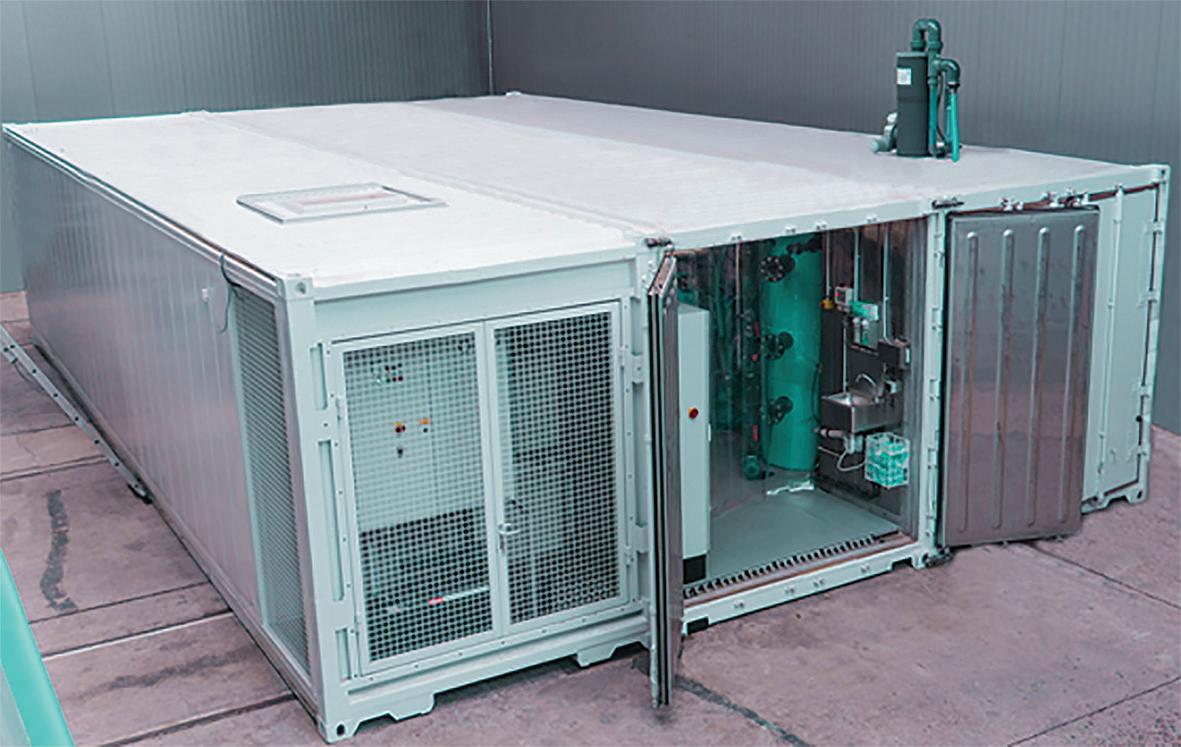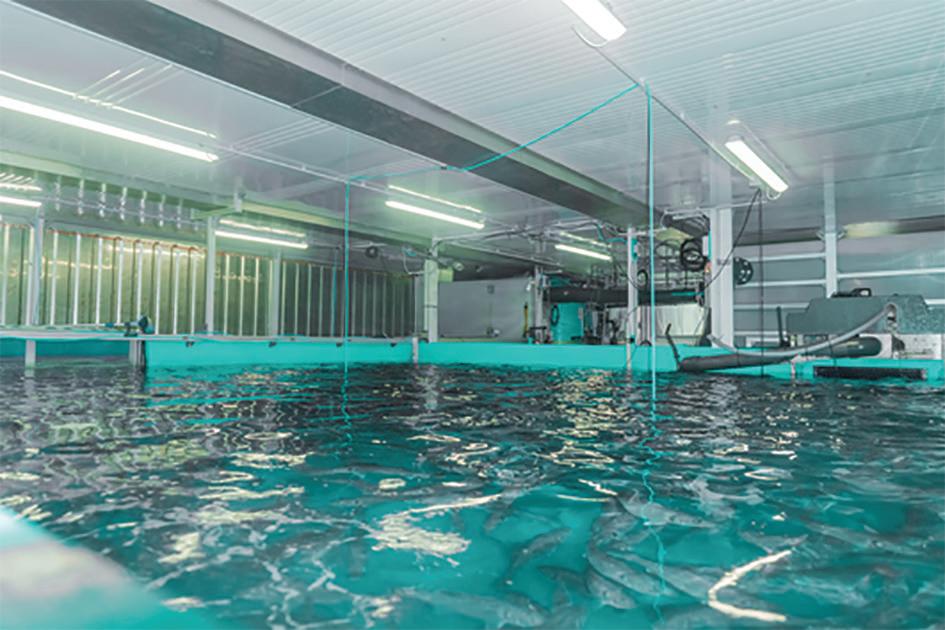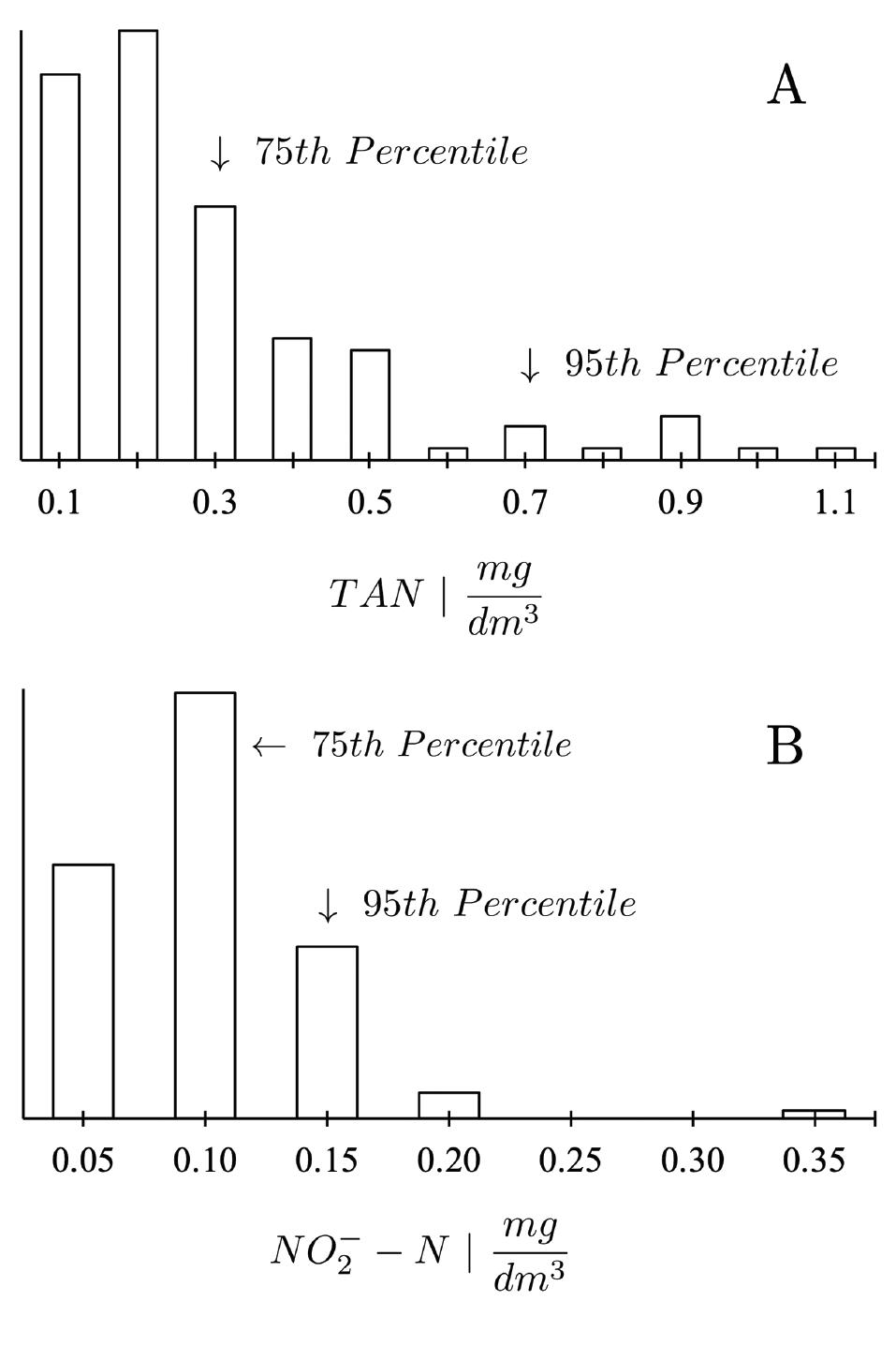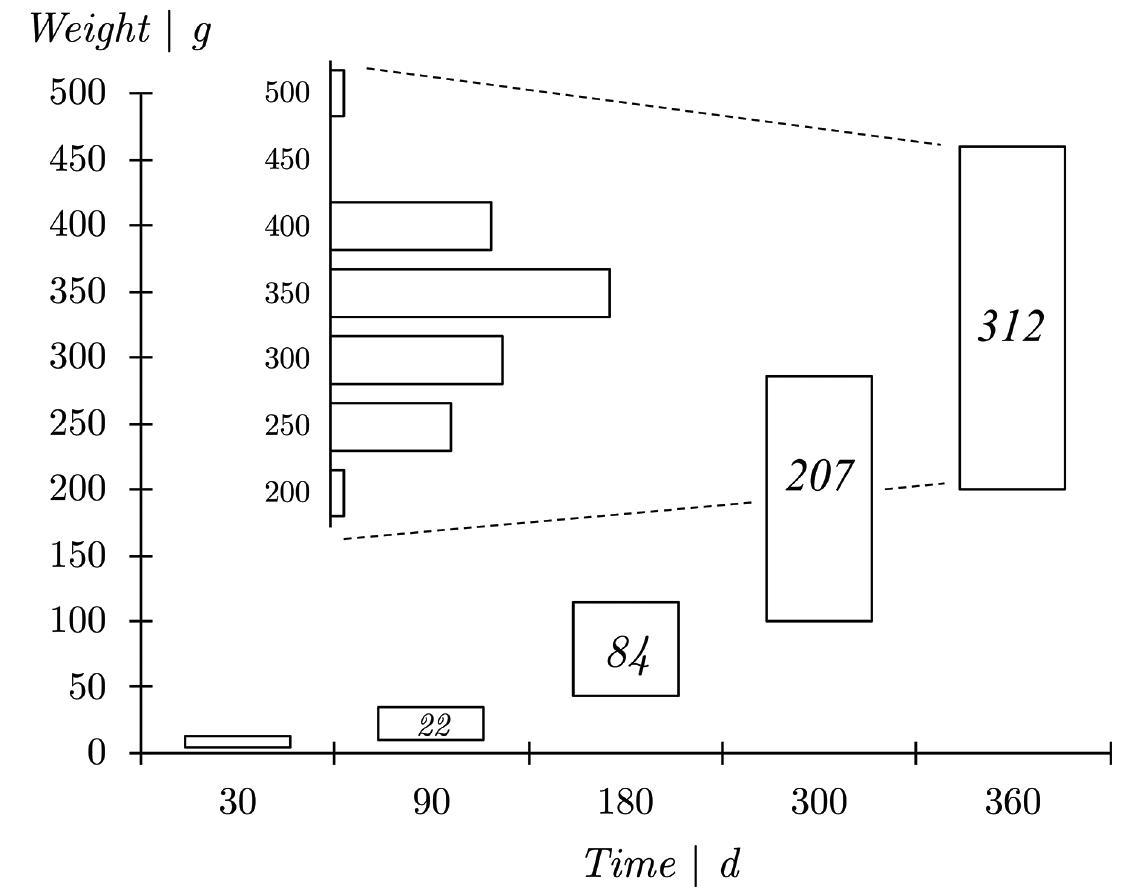
7 minute read
Fresh seafood out of a container
Three graduates from the Saarland University of Applied Sciences have set out to develop an aquaculture technology that would offer fresh and healthy food, regularly and reliably in every neighborhood. The trueness of the concept was validated during the past year when fresh seafood suddenly became short in supply because of the pandemic.
From the beginning, their concept was very different from that of the industry, which still counts on decreasing production costs at increasing production size. The production in an aquaculture recirculating system (RAS) that could embrace the whole life cycle developed into a landmark project. This happened in the Southwest of Germany, 700 km in distance to the ocean. The underlying concept: fish need to be produced in a healthy environment.
Innovative, container housed RAS
The SEAWATER cubes team drafted an innovative, container housed RAS for warm water fishes such as European seabass or gilthead seabream. The goal was to develop a versatile recirculating aquaculture system that could be used for different size fish. The group had already been involved in larval fish rearing in an artificial food chain. A SEAWATER cube, therefore, is designed for larval fish rearing under bio-secure conditions as well as for quick growth of fish to stocking size. The observation of health status and fitness of hatchery fish in a SEAWATER cube is the ultimate safety measure to avoid pathogen transfer into industrial productions.
The team started with an extremely important consideration. A core theorem of process technology is that a process water flow rate of one time the fish tank volume per hour results in roughly 66% water exchange rate; excretory products would build up harmful concentrations. The water flow rate needed to be in excess of three to push water renewal rate beyond 90% to deplete excretory products from the fish tank water and to perpetuate clear water to which marine animals are adapted.
The high process water flow needed a new geometry of the fish tank. The cubes’ fish tank is partitioned into three separate production environments by net walls, each housing one fish cohort at typically 50kg per m3 stocking density. Cohorts are combined of fish of different body size and age. The herewith obtained
Figure 1. A SEAWATER cube for closed cycle aquaculture. Three standard sea containers are housing a RAS for annually seven tons fish production. SEAWATER cubes are alternatives not only for urban congested areas but also as add-on to rural farms.
Variable Arithmetric Standard mean deviation
Temperature (°C) 18.1
pH Salinity (psu) 7.5
22.3
Redox-potential (mV) 229 Dissolved oxygen 91
saturation (%) Total ammonia nitrogen 0.23 (mg dm-3) Nitrite nitrogen (mg dm-3) 0.08 Nitrate nitrogen (mg dm-3) 88 1.9
0.2
1.1
35
10
0.21
0.04
17
Table 1. Arithmetic mean and standard deviation for process variables measured in the process water of the SEAWATER cube during the production period.
Figure 2. Frequency distributions for total ammonia (A) and nitrite nitrogen (B) during the course of production. Both frequency distributions are left-skewed indicating a clearly higher frequency of lower concentrations. Observations beyond the 75th percentile are outliers that were caused by technical adjustments and maintenance in the pilot RAS production. Observations beyond the 95th percentile indicate extreme values of RAS process.

open channel flow minimizes the energy consumption for the RAS water circulation and provides a suitable water stream pattern for every size of fish.
The second fundamental step of any SEAWATER cube is the thorough removal of particulate matter from the process water. Again, fundamental knowledge taught that more than a single filter is required to include the entire particle size range existing in RAS process water. The process water in every cube is pre-treated by drum filtration and post-treated by a flotation process also referred to as foam fractionation. With that, clear water was maintained in all parts of the RAS.
The flotation process removes not only fine particle fraction but also microorganisms from the RAS process water. The addition of minor amounts of ozone enhances the efficiency without striving for disinfection of the process water. Disinfection is counterproductive in RAS aquaculture as the whole system technology is based on biological processes involving myriads of microbes. It should not be forgotten that fish, especially larval stages, are the first suffering from residual oxidants (ozone). The SEAWATER cube concept sees the oxidative chemical treatment solely as a necessary substitute of natural oxidative mineralization. Dissolved organic matter is also removed from process water in the flotation process.
Biological treatment is supported by clear water and low numbers of microorganisms. The nitrification process takes place in a moving bed filter having a clean biofilm surface. Heterotrophic bacteria that would hamper the nitrification process are limited by low levels of dissolved organic substance in the process water. In doing so, total ammonia nitrogen and nitrite concentrations typically remain below 0.7 and 0.2 mg dm-3 during operation, respectively (Fig. 2, 95th percentile). Average values were 0.23 and 0.08 mg dm-3, respectively (Table 1).
A fixed bed denitrification filter was implemented to remove the accumulating nitrate. Denitrification was operated with acetate as organic source for the heterotroph process. The nitrate values leveled around 88 mg dm-3. The pH-value in the process water was maintained at around 7.5 without any buffer addition as a result of a continuous denitrification process.
The absorption (O2) and desorption (CO2) of gases were carried out at different points. The average pH of 7.5 indicates a sufficiently effective desorption. Desorption of dissolved carbon dioxide took place in a low head trickling column as well as in the flotation

Figure 3. View inside a SEAWATER cube. In front the third production environment with market size European seabass, Dicentrarchus labrax. In the background: degassing and flotation (left), drum filtration and nitrification (right).

Figure 4. Growth of European seabass, Dicentrarchus labrax, in the SEAWATER cube RAS. Average weight is indicated by the numbers within the bars. The inserted bar chart shows the weight distribution of the fish cohort after 360 days. Market size of fish is reached after one year, whereby the sale of fish is already possible after 300 days. The marketing period can be extended over two months as slower growing fish reach market weight a little later.
apparatus and in the fish tank. In the fish tank air and oxygen are injected using sparger plates. Oxygen consumed by fish and co-existing microbes is easily replenished as biofilm and bio-floc formation, which would increase oxygen consumption, is limited by low concentrations of dissolved organic substance. Dissolved oxygen was maintained at 91 ± 10% saturation (Table 1). It is clear that oxygen was also absorbed during flotation and biofiltration.
The core element of every cube is the intelligent control based on empirical equation which is continuously adjusted. With this kind of artificial intelligence, the production process is always under full control. Sensors are transmitting real-time data to the data acquisition. Data and switching status are broadcasted via protected internet connection. Distant maintenance and early warning are possible through the plant owner as well as through the office. The sophisticated automation is not only safeguarding production but also supporting the business goal of the company, which is selling fresh, non-treated seafood customers are reckoning with.
Best environmental conditions (Table 1) were steadily maintained through the SEAWATER cube technology. The market size of fish, which is around 350 g in Germany, was reached in one year (Fig. 4). This result was literally owed to the pandemic, i.e., to sustain regional fish supply during border closures in Europe. The average weight of fish was 312 ± 47 g after one year. However, the decisive factor for business is the weight variability. In view of the results (Fig. 2, inserted weight distribution), sales have already started after eleven months and lasted for three months. With that the cash flow has been more evenly distributed, supporting financial planning. Thus, a SEAWATER cube may expand hatchery business and possibly meet seafood demand in urban areas under normal circumstances.
Aquaculture after the state of science and technology is capable of contributing to food security in the future. However, future aquaculture needs to close nutrient cycles by integrating the heterotrophic fish production into photoautotrophic plant and algae production. This marks the ultimate goal of the SEAWATER cubes company that achieved major innovations in RAS aquaculture and already prototyped the technology of process integration.
More information: Uwe Waller
Mentor University of Applied Sciences Saarbrücken E: uwaller@web.de










